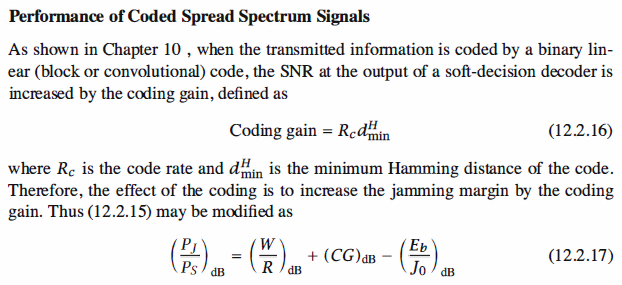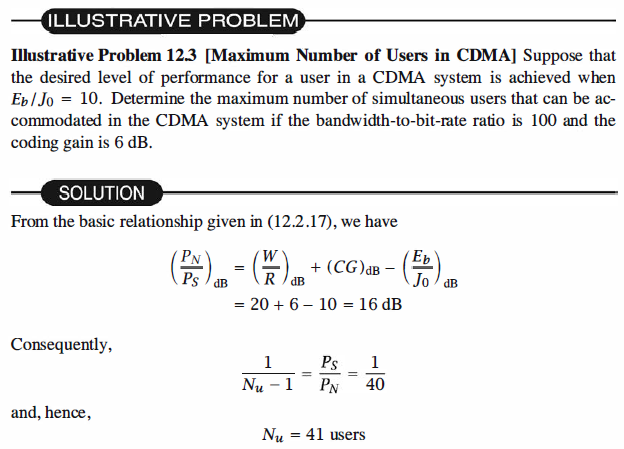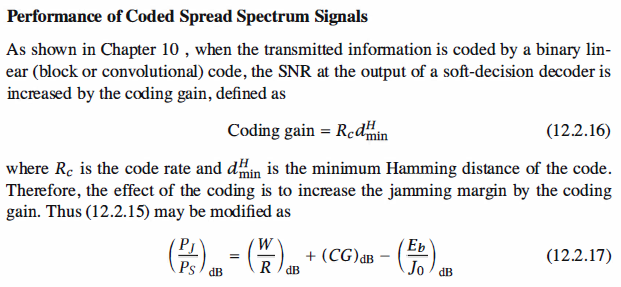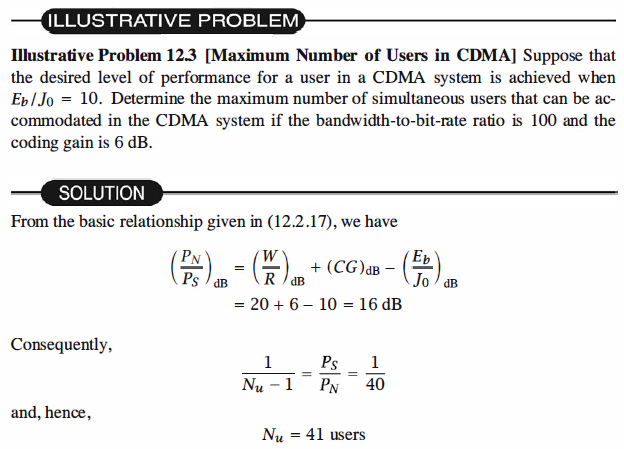Code Division Multiple Access
The enhancement in performance obtained from a DS spread spectrum signal through
the processing gain and the coding gain can be used to enable many DS spread spectrum
signals to occupy the same channel bandwidth, provided that each signal has its own
pseudorandom (signature) sequence. Thus it is possible to have several users transmit
messages simultaneously over the same channel bandwidth. This type of digital
communication, in which each transmitter/receiver user pair has its own distinct signature
code for transmitting over a common channel bandwidth, is called code division
multiple access (CDMA).
In digital cellular communications, a base station transmits signals to Nu mobile
receivers using Nu orthogonal PN sequences, one for each intended receiver. These
Nu signals are perfectly synchronized at transmission, so that they arrive at each mobile
receiver in synchronism. Consequently, due to the orthogonality of the Nu PN
sequences, each intended receiver can demodulate its own signal without interference
from the other transmitted signals that share the same bandwidth. However, this type
of synchronism cannot be maintained in the signals transmitted from the mobile transmitters
to the base station (the uplink, or reverse link). In the demodulation of each
DS spread spectrum signal at the base station, the signals from the other simultaneous
users of the channel appear as additive interference. Let us determine the number of
simultaneous signals that can be accommodated in a CDMA system. We assume that
all signals have identical average powers at the base station. In many practical systems
the received signal's power level from each user is monitored at the base station, and
power control is exercised over all simultaneous users by use of a control channel that
instructs the users on whether to increase or decrease their power levels. With such
power control, if there are Nu simultaneous users, the desired signal-to-noise interference
power ratio at a given receiver is

From this relation we can determine the number of users that can be accommodated
simultaneously.
In determining the maximum number of simultaneous users of the channel, we
implicitly assumed that the pseudorandom code sequences used by the various users
are orthogonal and that the interference from other users adds on a power basis only.
However, orthogonality of the pseudorandom sequences among the Nu users generally
is difficult to achieve, especially if Nu is large. In fact, the design of a large set of
pseudorandom sequences with good correlation properties is an important problem that
has received considerable attention in the technical literature.




Reference,
1. <<Contemporary Communication System using MATLAB>> - John G. Proakis